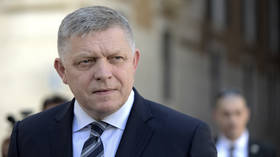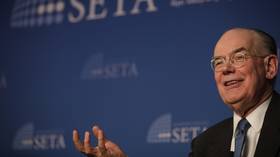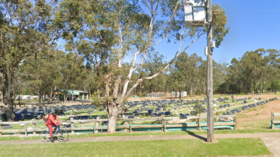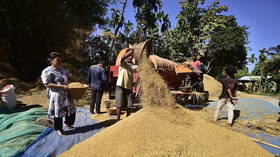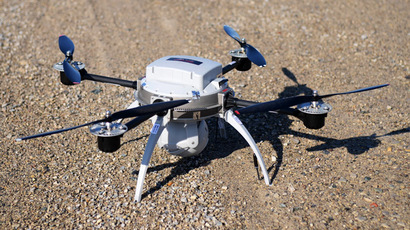FAA ‘looking into’ $10K fine for drone recording of tornado disaster area
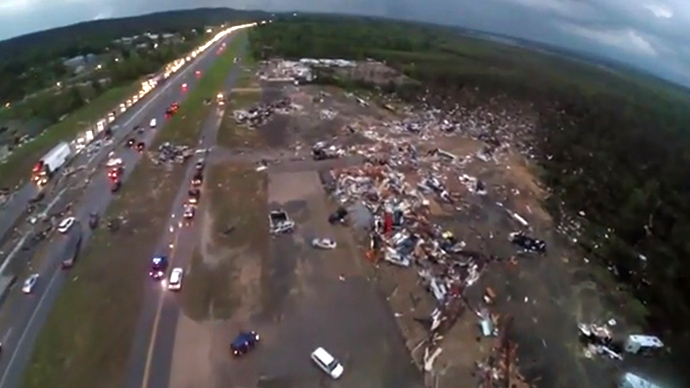
The Federal Aviation Administration, already facing criticism from private drone operators, has launched an investigation into drone use in the aftermath of the devastating tornadoes that swept across the southeastern United States.
The Arkansas Democrat-Gazette reported Tuesday that the FAA has initiated a probe into the use of unmanned aerial vehicles (UAVs) to gather aerial footage of the terrible scene in Arkansas, where at least 14 people died over the past few days due to the tornados. One of the worst hit areas was Mayflower, Arkansas, located just 40 minutes away from the state capital of Little Rock, where over a dozen people died.
Storm chaser and videographer Brian Eminger sought to help the public understand just how bad the disaster was by sending a drone equipped with a video camera over Mayflower just moments after the storms had passed.
A short video he posted on YouTube, which attracted nearly two million views within just 48 hours, showed emergency crews sifting through rubble where homes and buildings once stood. The images proved that the small Arkansas town was unrecognizable compared to just hours before, with vehicles and large piles of lumber strewn across the highway and elsewhere.
Eminger’s drone measures approximately 18 inches wide with small propellers that are about eight inches long, he told the Gazette. He used it in the past to help a local TV station obtain footage of a hotel fire in Hot Springs, Arkansas, but could now face a $10,000 fine because of strict FAA guidelines.

The agency’s regulations prohibit UAVs from being used for commercial purposes, including reporting, although photographers and press watchdogs alike have complained that the rule (designed to keep drones out of the flight path of major aircraft) are a violation of the freedom of press guaranteed by the First Amendment.
Proponents have also complained that frivolous restrictions on drone activity are a needless limit that eliminates a potentially helpful tool for first responders.
Matt Waite, director of the Drone Journalism Lab for the College of Journalism and Mass Communication at the University of Nebraska-Lincoln, previously made headlines when his class, which was learning how to use drones for journalistic purposes, received a cease-and-desist letter from the FAA forcing them to continue their instruction inside. The problem, Waite told Forbes, affects a variety of areas where UAVs could be incredibly useful.
“We don’t have really clear rules of the road right now for the use of drones for journalists or anyone, really,” he said on Tuesday. “There are a tremendous amount of questions that are floating around out there that have significant ramifications of how journalists will use there, that we do not have solid answers for.”
When questioned Monday on whether the FAA had seen Eminger’s video, FAA spokesman Lynn Lunsford told the Gazette that “We are looking into it.”
If Eminger is nervous about being on the hook for $10,000, though, a March court ruling could provide some relief. The agency previously tried to levy a fine against Raphael Pirker, a videographer whose company 'Team Black Sheep' uses drones to capture unique footage. Pirker convinced Judge Patrick G. Geraghty that “there was no enforceable FAA rule or FAR Regulation, applicable to model aircraft or for classifying model aircraft as an UAS [Unmanned Aircraft System].”
The FAA appealed the decision, citing air safety and security. The spokeswoman did not provide any details on when the agency could seek legal action against Eminger.



